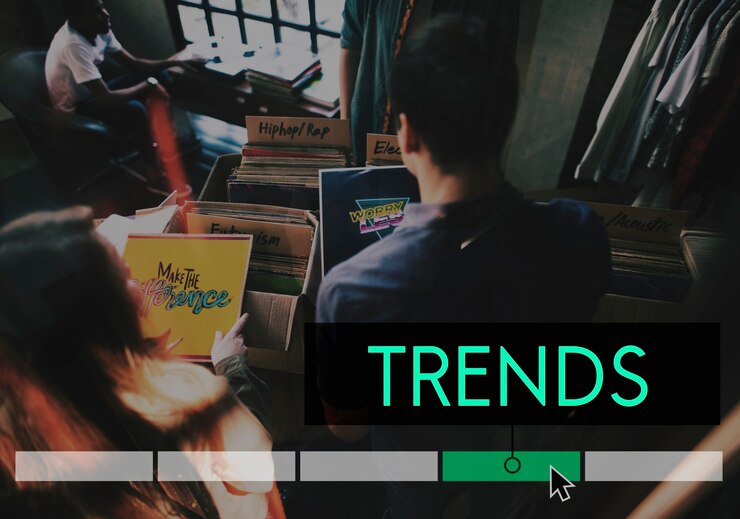
A trend refers to the general direction in which something is developing or changing over time. Trends can be observed in various aspects of life, including fashion, technology, economics, and social behavior. Understanding trends helps individuals and organizations anticipate future developments and make informed decisions.
Definition and General Understanding
- Trend: A trend is a pattern or tendency that indicates a consistent direction of change over time. This direction can be upward (increasing), downward (decreasing), or stable (neutral). Trends are often identified through the analysis of data and observations.
Trends in Different Contexts
1. Fashion and Lifestyle
- Fashion Trends: These refer to the popular styles, colors, and designs in clothing and accessories at a given time. Influenced by designers, celebrities, and cultural movements, fashion trends change frequently.
- Example: The rise of sustainable fashion reflects a trend towards eco-friendly and ethical clothing choices. Another example is the cyclical nature of fashion where certain styles from past decades resurface as new trends.
- Lifestyle Trends: These encompass shifts in people’s habits, preferences, and activities. Lifestyle trends can be seen in areas such as wellness, diet, and leisure.
- Example: The increasing popularity of plant-based diets and veganism as people become more health-conscious and environmentally aware.
2. Technology
- Tech Trends: These involve advancements and shifts in technology, including new innovations, software developments, and applications.
- Example: The increasing adoption of artificial intelligence (AI) in various industries is a significant tech trend. AI is being used for automation, data analysis, and enhancing user experiences.
- Digital Trends: Changes in how people use digital platforms and social media.
- Example: The rise of short-form video content on platforms like TikTok and Instagram Reels. This trend reflects changes in content consumption habits, where users prefer quick, engaging videos.
3. Economics
- Economic Trends: These are patterns observed in economic indicators such as GDP growth, unemployment rates, and inflation. Economic trends help in understanding the overall economic health and future prospects.
- Example: A trend of increasing GDP growth indicates a strengthening economy, while rising unemployment rates suggest economic challenges.
- Market Trends: In financial markets, trends indicate the direction in which prices of stocks, commodities, or other assets are moving.
- Example: A bullish market trend where stock prices are generally rising, or a bearish trend where stock prices are falling.
4. Social Behavior
- Social Trends: These refer to changes in societal behaviors and attitudes.
- Example: The growing awareness and advocacy for climate change and sustainability. Social trends can lead to significant shifts in public policy and consumer behavior.
- Digital Behavior: Trends in how people interact and behave online.
- Example: The increase in remote work and virtual meetings due to advancements in communication technology and changes in work culture.
How Trends are Identified
- Data Analysis: Trends are often identified through the systematic analysis of data. This can include statistical methods, surveys, and market research.
- Observation: Observing changes in behavior, preferences, and technological advancements also helps in identifying trends.
- Predictive Analytics: Using tools and techniques to forecast future trends based on current data and patterns.

Importance of Understanding Trends
- Strategic Planning: Businesses and organizations use trends to develop strategies and make informed decisions. Understanding trends helps in anticipating market demands and staying competitive.
- Innovation: Recognizing trends can inspire innovation and new product development. Companies that stay ahead of trends are often leaders in their industry.
- Adaptation: Trends indicate changes in the environment, allowing individuals and organizations to adapt to new circumstances effectively.
- Policy Making: Governments and policymakers use trends to create relevant policies and address future challenges.
Conclusion
Trends represent the direction of change in various aspects of life and are crucial for strategic planning, innovation, and adaptation. Whether in fashion, technology, economics, or social behavior, staying informed about trends allows individuals and organizations to make better decisions and anticipate future developments. Understanding trends provides a competitive advantage and prepares us for the evolving world.
